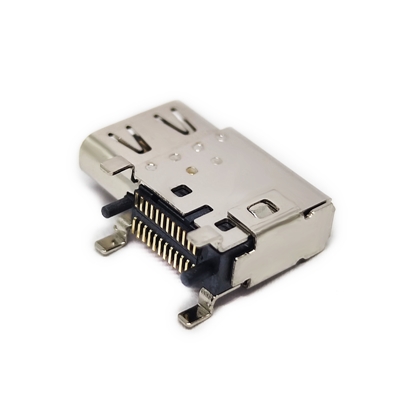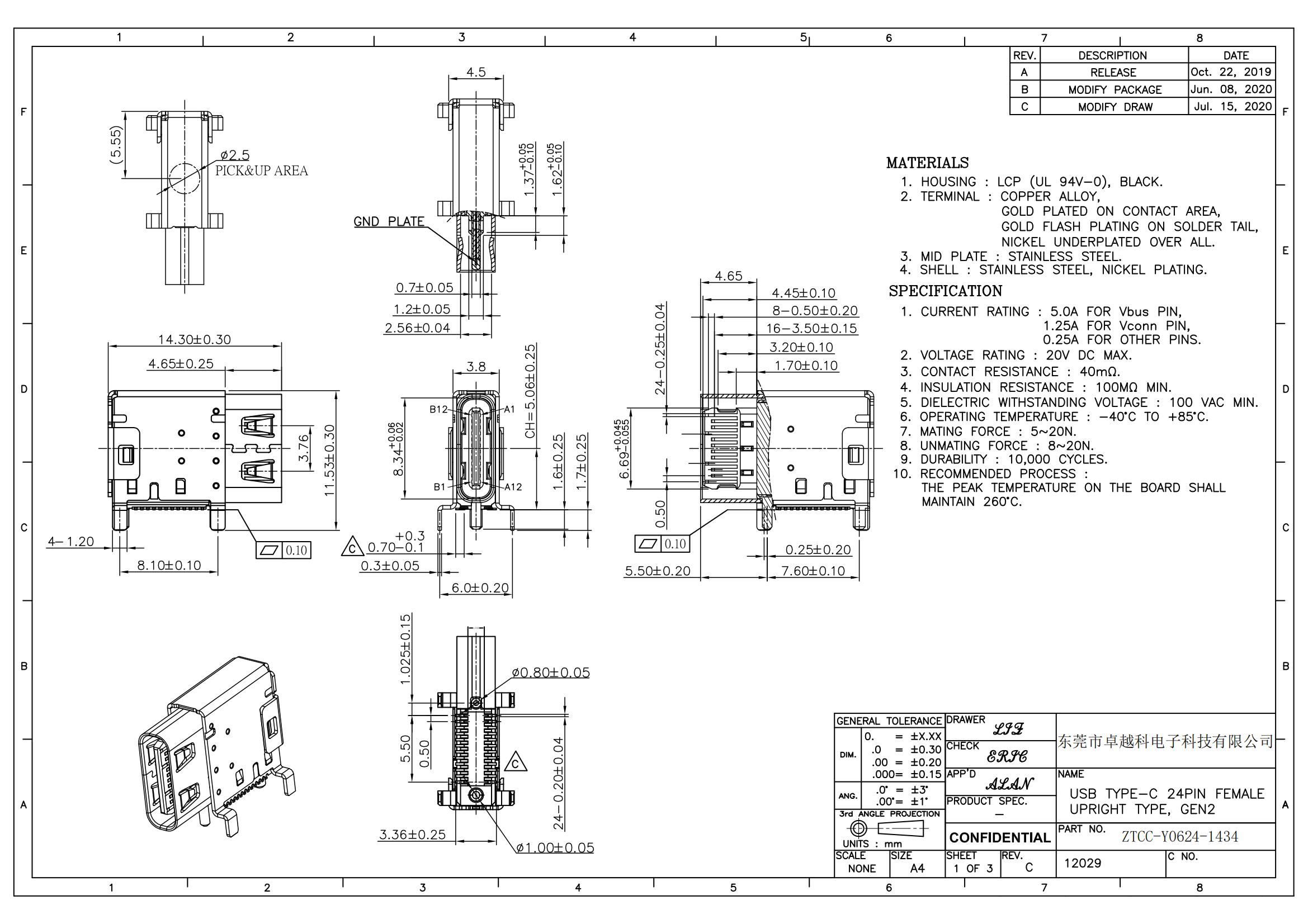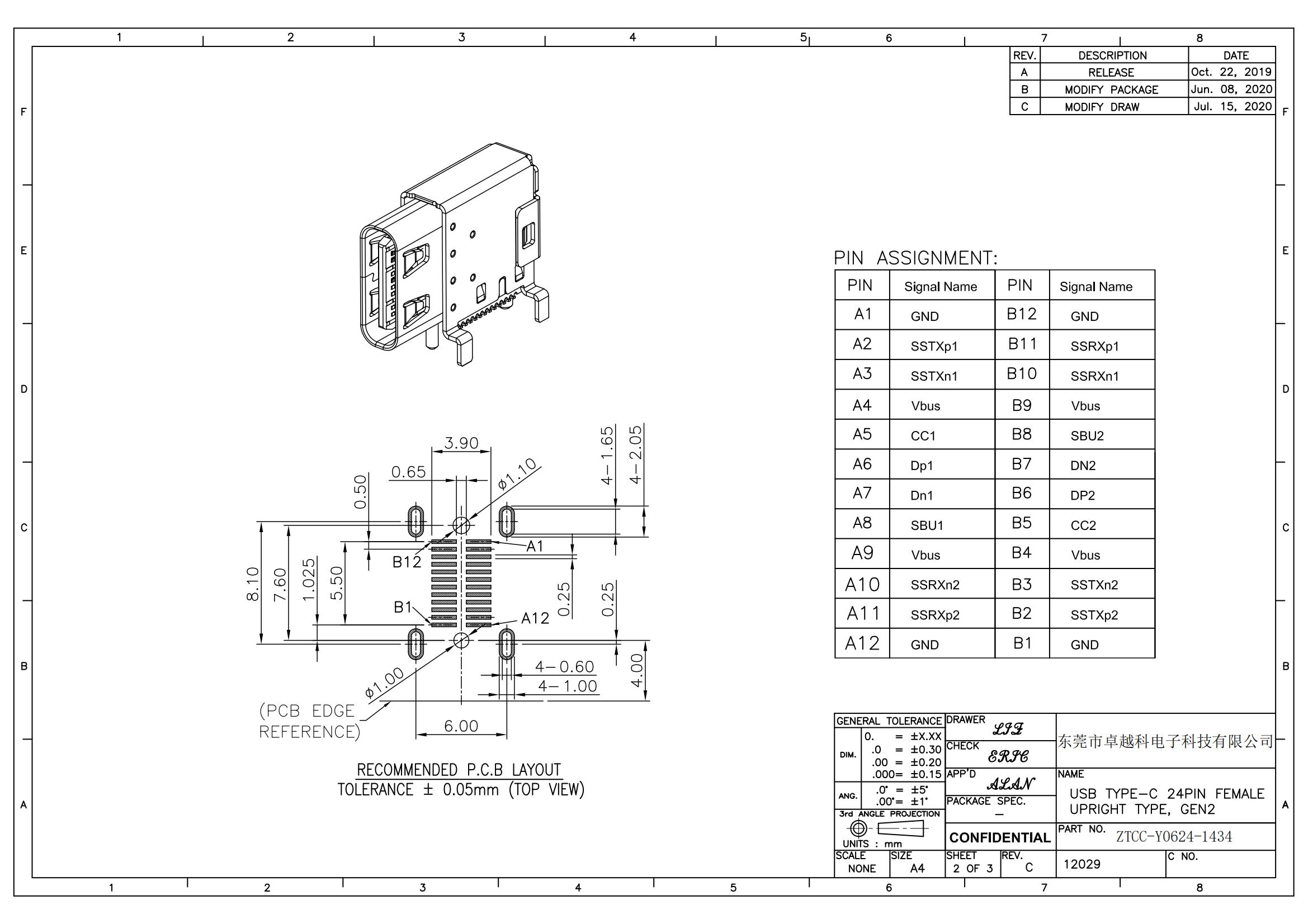With the increasing demand for high-speed data transmission and multi device connectivity, Thunderbolt 4 technology has gradually become the core connectivity standard for modern electronic devices. Thunderbolt 4 not only supports a transmission rate of up to 40Gbps, but also is compatible with multiple protocols such as DisplayPort and PCIe, enabling simultaneous data transmission, video output, and charging functions. As the physical interface of Thunderbolt 4, the structural design of Type-C connector directly determines the implementation effect of Thunderbolt 4 function. This article will explore in detail the structural design and technical challenges required for Type-C connectors to achieve Thunderbolt 4 functionality.

Basic structure of Type-C connector
Type-C connector is a compact and reversible interface, and its basic structure includes the following parts:
1. Pin design: The Type-C interface has a total of 24 pins, divided into two rows, supporting bidirectional data transmission and power transmission.
2. Signal transmission channels: including multiple signal channels such as USB 2.0, USB 3.1/3.2, DisplayPort, and PCIe.
3. Power transmission capability: Supports up to 100W of power transmission to meet fast charging needs.
Thunderbolt 4 Requirements for Type-C Connectors
Thunderbolt 4 has put forward higher requirements based on the Type-C interface:
1. High speed data transmission: Thunderbolt 4 needs to support a bidirectional bandwidth of 40Gbps, so Type-C connectors must optimize signal transmission channels to reduce signal attenuation and interference.
2. Multi protocol compatibility: Thunderbolt 4 supports DisplayPort, PCIe, and USB protocols, and Type-C connectors need to have multi protocol switching capabilities to ensure stability in data transmission and video output.
3. Power transmission and safety: Thunderbolt 4 requires Type-C connectors to support 100W power transmission and have overvoltage and overcurrent protection functions to ensure equipment safety.
Key structural design for achieving Thunderbolt 4 function
1. Pin optimization:
-Increase the number of high-speed signal pins to ensure a transmission rate of 40Gbps.
-Optimize pin layout to reduce signal crosstalk and electromagnetic interference.
2. Signal integrity design:
-Adopting differential signal transmission technology to improve anti-interference ability.
-Use high-quality shielding materials and grounding design to reduce signal attenuation.
3. Power transmission and thermal management:
-Increase the current carrying capacity of power transmission pins and support 100W fast charging.
-Design a heat dissipation structure to prevent overheating issues during high-power transmission.
4. Multi protocol switching mechanism:
-Integrate multi protocol controllers to achieve automatic switching between DisplayPort, PCIe, and USB protocols.
-Optimize firmware design to ensure stability and compatibility of protocol switching.
Technical Challenges and Solutions
1. Signal attenuation and interference:
-Challenge: High speed signal transmission is susceptible to electromagnetic interference and signal attenuation.
-Solution: Adopt high-quality shielding materials and optimize pin layout to reduce interference.
2. Thermal management issues:
-Challenge: High power transmission may cause connector overheating.
-Solution: Design a heat dissipation structure and temperature control mechanism to ensure equipment safety.
3. Compatibility and stability:
-Challenge: Multi protocol switching may lead to compatibility issues.
-Solution: Optimize firmware design and protocol controller to improve switching stability.
Future Development Trends
1. Higher transmission rate: Future lightning technology may support higher transmission rates, and Type-C connectors need to further optimize their signal transmission capabilities.
2. Wider application scenarios: With the popularity of 5G and edge computing, Lightning 4 will play a role in more fields, and Type-C connectors need to adapt to diverse application needs.
3. Intelligence and Integration: Future Type-C connectors may integrate more intelligent functions, such as automatic identification of device types and optimization of transmission parameters.
The implementation of Thunderbolt 4 function in Type-C connectors requires optimization in terms of pin design, signal integrity, power transmission, and multi protocol compatibility. Despite facing technical challenges such as signal attenuation, thermal management, and compatibility, Type-C connectors can meet the high-performance requirements of Thunderbolt 4 through structural design and material optimization. In the future, with the further development of technology, Type-C connectors will play a more important role in high-speed data transmission and multi device connectivity.




